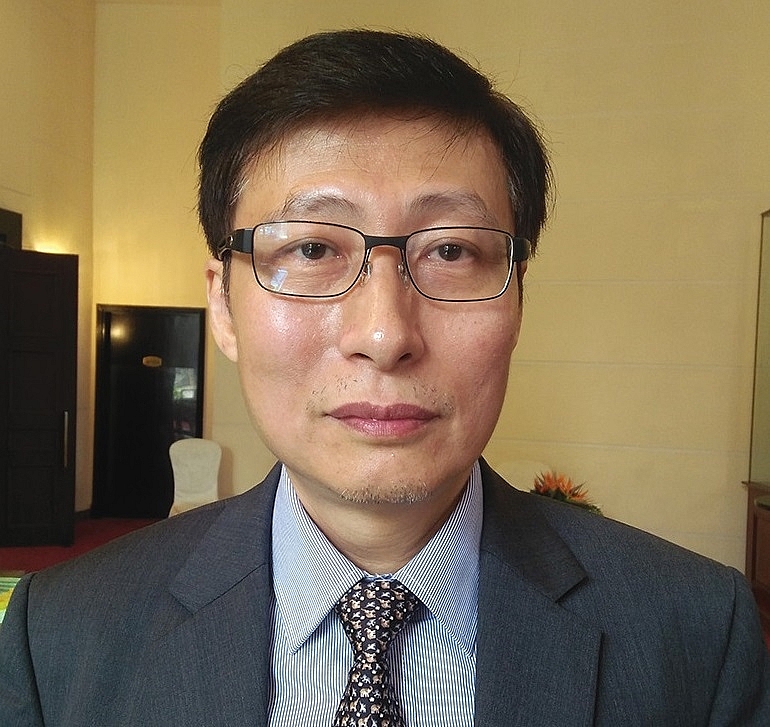Nguyen Minh Cuong, principal country economist from the Asian Development Bank, talked bout the economy’s performance and its expected outlook this year, especially for foreign direct investment.
What is your assessment of Vietnam’s eight-month economic performance in 2020?
 |
| Nguyen Minh Cuong, principal country economist from the Asian Development Bank |
Vietnam has demonstrated exemplary success in containing the COVID-19 spread and is therefore among the first countries to fully reopen the economy domestically. However, the economy here has not been spared from the impact of the pandemic.
Growth plunged from 3.7 per cent on-year in the first quarter to 0.4 per cent in the second quarter, dragging down growth in the first half of the year to 1.81 per cent, the lowest rate since 2011.
On the supply side, growth in services fell from 6.7 per cent in the first half of 2019 to 0.6 per cent a year later as international tourist arrivals shrank by 56 per cent, slashing the contribution of services to GDP growth from 2.5 percentage points a year earlier to 0.2 points. Domestic tourism started to recover in May and June but was halted by COVID-19 resurgence in July.
Meanwhile, growth in agriculture was halved from 2.3 per cent in the first six months to 1.2 per cent a year later because of falling demand for exports but also the worst drought in 4 decades, salinity intrusion in the Mekong Delta, and livestock hit by African swine fever. Farming output expanded by only 0.8 per cent, forestry by 2.1 per cent, and fisheries by 2.4 per cent.
Growth in industry and construction plunged from 8.9 per cent a year earlier to 3.0 per cent. Growth in export-oriented manufacturing tumbled from 11.2 to 5 per cent, while output in mining and quarrying contracted by 5.4 per cent.
Restricted mobility and weak demand dragged down construction growth from 7.9 per cent in the first half of 2019 to 4.5 per cent a year later.
The purchasing managers’ index, in which a reading below 50 indicates future contraction, fell further from 47.6 in July to 45.7 in August, the lowest reading since May. August output and new orders fell even more than in July.
The slowdown was reflected in lower incomes and spending. Growth in private consumption fell from 7.2 per cent in the first half of 2019 to a marginal 0.2 per cent in the first six months of 2020. Retail sales contracted by 2.7 per cent on-month in August and 0.02 per cent in the first eight months over the same period a year earlier.
The Asian Development Bank has just revised down its forecast for Vietnam’s economic growth to only 1.8 per cent. What is the reasoning behind this move?
The global downturn and weak domestic conditions, notably worsening unemployment and falling consumption, have hurt the economy more than expected. The outlook is further threatened by a rise in new COVID-19 infections since late July.
The growth forecast for 2020 is therefore revised down from 4.8 per cent in the Asian Development Outlook (ADO) 2020 and 4.1 per cent in the June ADO Supplement to 1.8 per cent now for 2020 and 6.7 per cent for 2021. However, a 1.8 per cent remains good, especially when many nations are forecast to suffer from negative growth this year.
Vietnam’s economic outlook in the near term is difficult, with the global economic downturn and domestic weakness proving worse than expected. However, Vietnam is showing stronger resilience than most comparable economies, and the economy’s outlook over the medium and long term remains positive.
Economic fundamentals have not been impaired, and Vietnam looks likely to benefit from current trends in global patterns of trade, investment, and production.
What can be said about foreign direct investment (FDI) flows into Vietnam this year and beyond?
I think more FDI will continue coming to Vietnam which is considered an attractive market with a big population of nearly 100 million people and a growing middle class with big consumption. Vietnam is effectively improving its business climate. Looking ahead to 2021, investment will be boosted by increasing domestic consumption, improving disbursement of public investment, the continuing diversion of production from China to Vietnam, recovery in China’s economy, and the implementation of the EU-Vietnam Free Trade Agreement to greatly liberalise trade.
The Japan External Trade Organization has also released a list of 15 Japanese companies to shift their manufacturing from China to Vietnam.
The majority of those moving to Vietnam make medical equipment while the rest produce semiconductors, phone components, air conditioners, or power modules.
How can Vietnam attract more high-quality FDI?
While more Japanese firms and investors are planning to come to Vietnam, some show the intention of withdrawing from the market due to many reasons. As Vietnam’s economy has moved up the development ladder, the time to attract foreign investment through fiscal incentives such as tax-based and land-based incentives is over.
Vietnam should rather prioritise development of a business-friendly climate, seamless physical infrastructure and efficient logistics facilities, highly skilled labour, and good governance as key ingredients to lure in high-quality foreign investment.
In addition to large foreign investors, medium- and small-sized foreign investors can also be welcome as long as they can meet Vietnam’s requirements on environmental protection, technology transfer, job creation, and promotion of links with domestic businesses. In many cases, small investors can help connect with local enterprises better than bigger ones. VIR
Nguyen Thanh